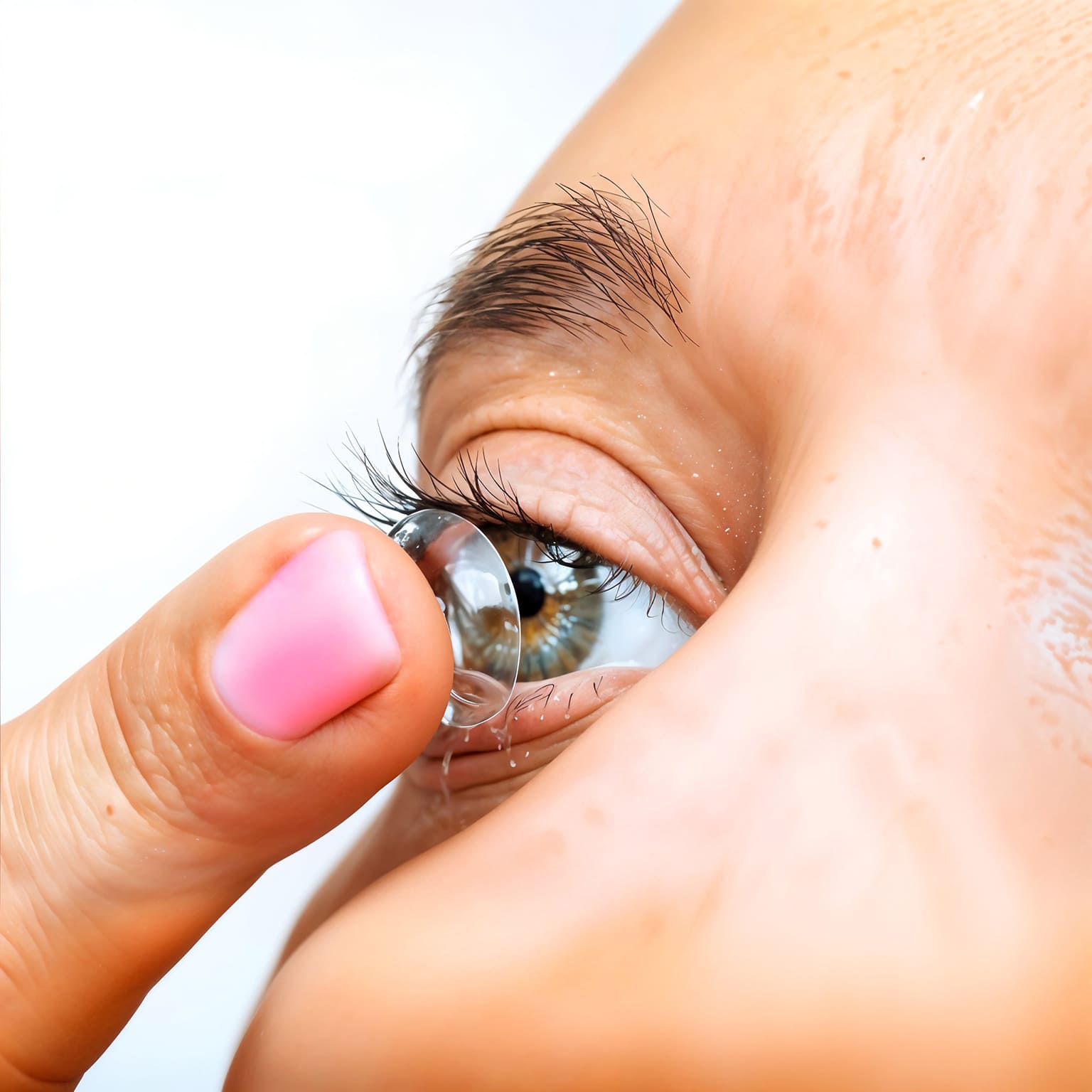What Are Scleral Contact Lenses?
Scleral Lenses are a specialty contact lens that covers the entire corneal surface (or sclera) of the eye, rather than just the cornea as conventional contacts do. These gas permeable (GP) lenses offer the same advantages as other contact lenses:
- Sharper Vision
- Strong Durability
- Easy Handling
- Low Complications Risk
Because Scleral Lenses cover the full surface of the eye, they are very stable and have low probability of dislodging. They provide similar comfortability to soft lenses, due to a layer of saline solution suspended between the contact and the eye surface.

Types of Scleral Contact Lenses
Scleral Lenses are divided into three categories, based on the size and location of the lens. All three types are made of rigid, gas permeable materials to allow oxygen to reach the surface of the eye, and differ only in where the lenses make contact with the surface of the eye:
- Mini Scleral Lenses – these are suspended above the corneal surface and rest on the anterior sclera.
- Corneo-Scleral Lenses and Semi Scleral Lenses – these are larger than traditional contact lenses and rest around the area between the cornea and sclera.
- Full Scleral Lenses – these are the largest Scleral Lenses, and are suspended the furthest from the surface of the cornea, resting on the sclera.
Scleral Contact Lenses
Anyone considering contact lenses may be a suitable candidate for scleral lenses. Patients of almost all ages have been successfully fitted with scleral lenses, limited only by the size of the patient’s eyes and their ability to insert/remove them safely. If you are not a good candidate for conventional contact lenses, scleral lenses may be a suitable solution. They are ideal for individuals with:
- Certain corneal diseases (Keratoconus, etc.) or irregular corneas – the space between the lens and the surface of the eye provides a unique solution for those who cannot use traditional contacts, due to corneas with an irregular curvature, scars, and other irregularities in the cornea surface.
- Dry or sensitive eyes – the space between the lens and the cornea is filled with a saline solution, which can act as a sort of tear reservoir that can be soothing to dry or easily irritates eyes.
Custom Mould impression Scleral Lenses
Custom mold impression scleral lenses are specifically designed to fit the unique shape of your eye, offering a more comfortable and stable fit compared to other types of lenses. These lenses are created using detailed impressions or scans of the ocular surface, ensuring a precise match to each individual eye. This highly customized fit enhances lens stability and significantly improves comfort for many patients. They are often prescribed to manage conditions involving irregular corneas, such as keratoconus, post-corneal transplant irregularities, or other corneal disorders.
Why are they necessary?

Fit
Custom lenses are designed to fit the exact shape of your eye, including bumps, lumps, and wrinkles. This provides a more comfortable and stable fit than other types of lenses.

Vision
Custom lenses can provide sharper vision, reduced glare, and better night vision.

Treatment
Custom lenses can be used to treat complex eye conditions, such as keratoconus, corneal transplants, and other conditions.
Custom mold impression scleral lenses are contact lenses that are custom-made to fit the shape of a patient's eye. They are made using a special molding technique that creates a 3D model of the eye.
How they are made
A mold is taken of the front of the eye using a special device. The mold is sent to a lab for 3D scanning . The scanned data is used to create a 3D model of the eye. A contact lens is designed to match the model
The impression procedure is painless and fast. Once the impression compound is mixed, it is applied on the eye within 45 seconds. The impression then takes between 2-5 minutes to solidify, with the exact time depending on the room temperature and humidity. Once the impression compound has set, Dr. Chou gently removes the impression. Aside from the practitioner pulling and tugging on the eyelids during application and removal of the impression, most patients are surprised how easy it is to have the impression. Many describe the impression compound as feeling “dark and cool”, with some patients even finding the procedure soothing to the eye. It may be necessary to repeat the impression-taking several times to provide a suitable impression to guide computer modeling.
Why are they necessary?

Comfort
They are designed to be comfortable and stable

Vision
They can improve visual acuity, reduce glare, and improve night vision

Fit
They can fit eyes that are difficult to fit with conventional lenses

Optics
They can improve optics in diseased corneas
